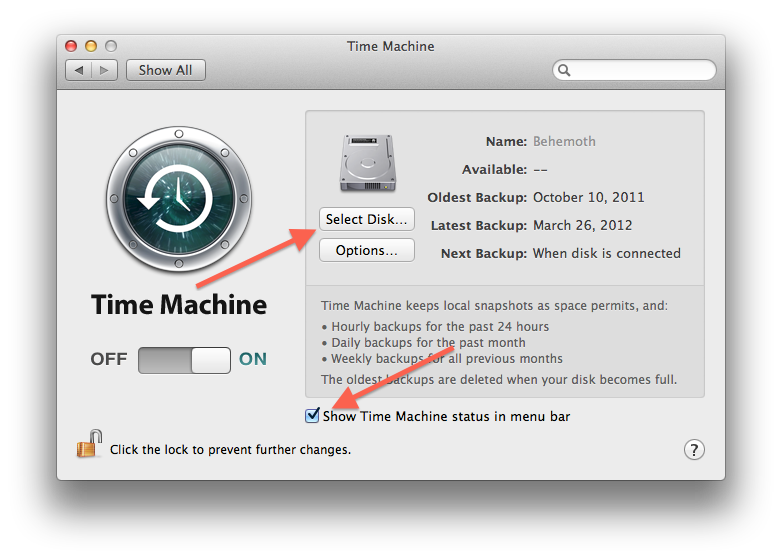

- #Rpi netatalk time machine install#
- #Rpi netatalk time machine update#
- #Rpi netatalk time machine manual#
- #Rpi netatalk time machine mac#
However each time you return to the network, your Mac will find the timemachine host and opportunistically back up changes made since the last backup. Again, the first backup can take some time. Head to the menu bar, hit the Time Machine icon, and click "Back Up Now". If you want to force the first backup (which can take a while depending on how much stuff you have on your hard disk), click the "Show Time Machine in menu bar" option. When prompted, put in the user credentials you created previously (see the "useradd" step).Īnd you're done! Ensure "Back up Automatically" is ticked, and let Time Machine do its thing. You should see your network timemachine host (or whatever you named your system). It'll look something like this:Ĭlick the "Select Backup Disk" button. But this is the much easier GUI method for one-offs įind and open the Time Machine app. I do this when I'm mass-configuring hundreds of Macs via Puppet/Ansible/etc.

Command Line / power-users, you can use the "tmutil" command to automate the following. If you don't want BtrFS or have some other pre-configured storage, skip this bit and jump to the Netatalk install. Ensure you point to the correct disks and don't destroy your data if you're on some other system. My drives show up as /dev/sda and /dev/sdb on my RPi (with the OS on the SD card device /dev/mmcblk0).

Be careful with the following instructions, as they can destroy disk contents. * Format the USB drives as a BtrFS RAID1 mirror. You might need to reboot when done, depending on the updates installed.
#Rpi netatalk time machine update#
Set your hostname to something meaningful (I've called mine "timemachine"), set your timezone, connect to WiFi if you want (Ethernet cable is fine too, obviously much faster on the new RPi4 with real Gigabit), and update the software. * If you're on a Raspberry Pi, run the "raspi-config".
#Rpi netatalk time machine install#
You can install anything you like, and there's heaps of options here: * Install Raspbian (soon to be renamed to "Raspberry Pi OS"). 200MB/s sustained for a USB3 spindle drive. That just sends raw data from the disk to nowhere and measures the read speed. * Buy 2x desktop USB3 hard drives (3.5" 4TB, external power each), plugged them in the USB3 ports of the RPi. 2GB is total overkill, as this configuration uses under 100MB for kernel+applications. I grabbed a Model 4B with 2GB RAM, as it was the cheapest I could find.
#Rpi netatalk time machine manual#
However on a home or small office network, it's tolerable, and the trade off is things work "like magic" without manual configuration needed. Please note that this is a *terrible* thing for large corporate networks, as it relies heavily on noisy broadcast traffic. It's a way for service to announce themselves on a network. * Avahi - this is an open source implementation of the mDNS "zero-configuration" protocol, which is the same thing as Bonjour. Seep post Number 5 in this thread if you want to use that: New Macs now support Time Machine over SMB. Don't confuse this with Apple's new APFS on-disk file system, which is something totally different. * Netatalk - an open source implementation of AFP (Apple Filing Protocol), which lets a Mac+TimeMachine talk to your device natively over a network. Bang it in a Linux VM, put it on a FreeNAS type device, whatever. But any POSIX compliant operating system will do. Thankfully, there's not much to the device, and everything that it uses is open source. That all came to an end in 2018 when Apple shitcanned the product. Super handy, and happened automatically without having to plug drives in to your Mac. A little WiFi enabled NAS that allowed Macs on a network to back up via Apple Time Machine and store incremental file changes. Apple used to make a thing called a Time Capsule, which was pretty cool.


 0 kommentar(er)
0 kommentar(er)
